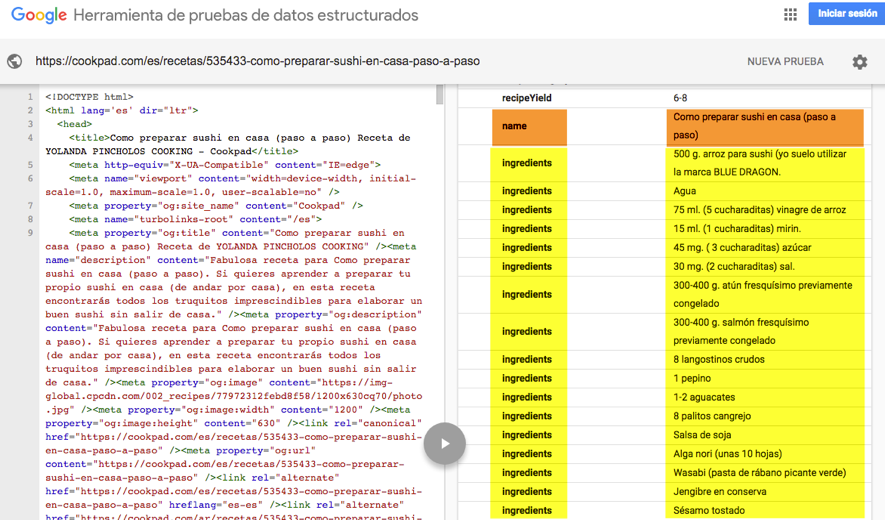Written by Rubén Martínez
Index
The CTR or Click Through Rate in SEO is the percentage of clicks with respect to the impressions of a search engine result. This concept is directly related to the effectiveness of a campaign and is a clear indicator of the interest shown by users in our results over those of our competitors. Today we are going to see how to improve it through our snippets in the SERPs.
In an ideal situation, the CTR would be 100%, which would mean that whenever our website has appeared in the search results, your link has been clicked on. However, as we can see in the image, the reality is quite different and a result that appears in 1st position barely exceeds 30% in CTR.

Influence of snippets on the CTR
Achieving a high level of clicks from the natural results will depend on how much we are able to convince users to choose to click on our link and not those of our competitors. As a method of persuasion, we have a series of data that we can customize and that will later become part of our natural result. These are:
- Title
- Meta description
- URL
- Enriched formats
Using these parameters, you will have to do no more and no less than sell your product. In other words, persuade the user that on your site he will find what he is looking for better explained than on other sites. Therefore, I advise you to invest the time you need to optimize this section in the way I will now begin to tell you.
Keyword research
Before we dive into the rich snippets part, one of the premises to achieve an attractive snippet for the user, is to try to to get as close as possible to your search, demonstrating that our content will be able to solve your question or your problem.
This will entail, on the one hand, keyword research that will give us clues about the most recurrent searches for the concepts we are dealing with and on the other hand, as we will see now, the application of microformats that add rich snippets to our results.
When we know how users search for our product (or in other words, when we have the results of the research), we will be able to write a catchy title with the main keyword of the page content. If we need a title for a listing of video games for ps4, with the above study we will conclude which variant is more convenient of all the ones we have at our disposal: “Video games for Play Station 4”, “Games for Play 4”, “Games for PS4”, etc. Obviously, when faced with identical formulas, we will choose the one that we expect to bring us the highest level of visits.
Regarding the URL, always remember that they must be legible and directly related to the content.
The meta description should be a sentence of no more than 156 characters that also contains the main keyword and will act as an eye-catching summary of what the user will find if he clicks on the link. As a tip, don’t miss the opportunity to add features that make you stand out from the competition.
The impact of microformats
Before the advent of microformats, the CTR depended entirely on the first three elements mentioned above: title, description and URL. Today, this has been put on the back burner and the graphical components of the results get most of the clicks, even when they do not appear in the top positions. Let’s look at an example:
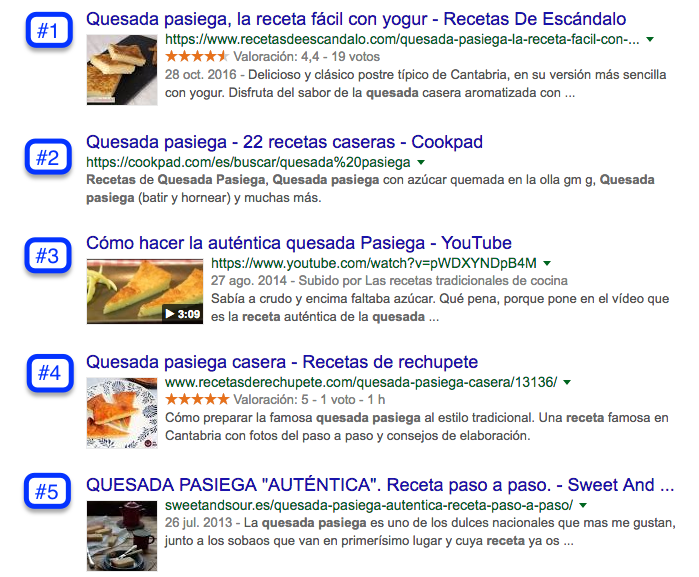
The advantage of rich snippets lies in providing more information at an earlier stage of navigation.
In another case, we observed several types of results when searching for “Samsung Galaxy S8”:
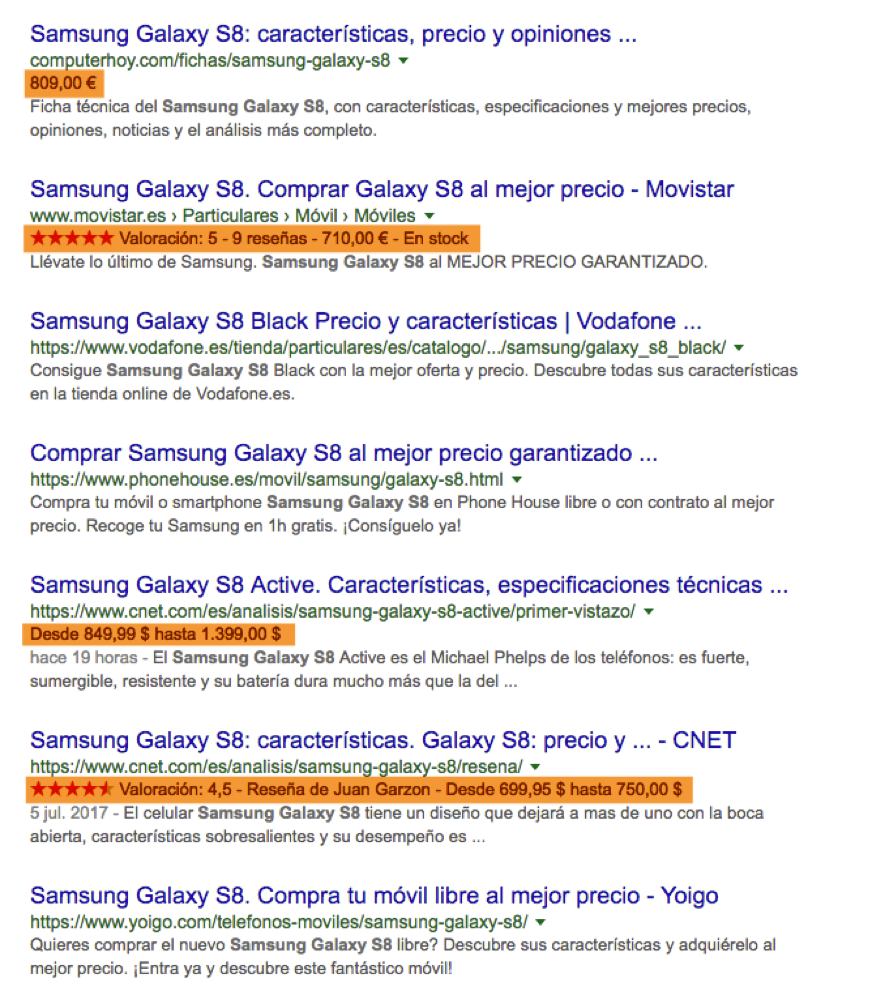
How to add Rich snippets to our results
In order for our results to be displayed in the SERPs in an enriched form, i.e. next to more visual elements such as star ratings, product prices, images, videos, etc., it is necessary to perform a marking of this data as recommended in this article, according to the information we want to display in a prominent way, so that the search engine can store them with a certain structure and later display them in a more user-friendly format.
Rich snippet or featured snippet
Through the above markup, Google is even able to select a result and display it prominently in position 0, as we see in the following image:
If we access the page, we will find the list of ingredients that we have seen before in the highlighted Google result:
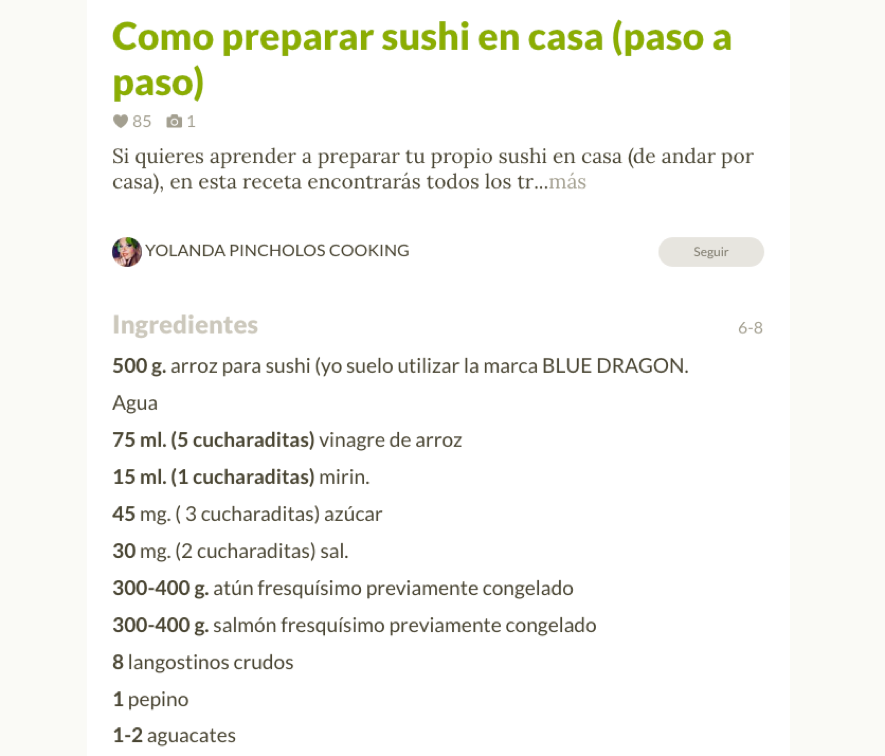
If we analyze the data markup, we can see how, from the web code, the list of ingredients is being sent to Google in a structured way:
How to know and analyze our CTR
The easiest and most reliable way to know if your practices are working is by logging into Google Search Console and accessing the Search Analytics section -> Search Traffic. In this section, you will have a panel consisting of four indicators: Clicks, Impressions, CTR and Position, and on the other hand, the filters that you can select to extract the above information from them.

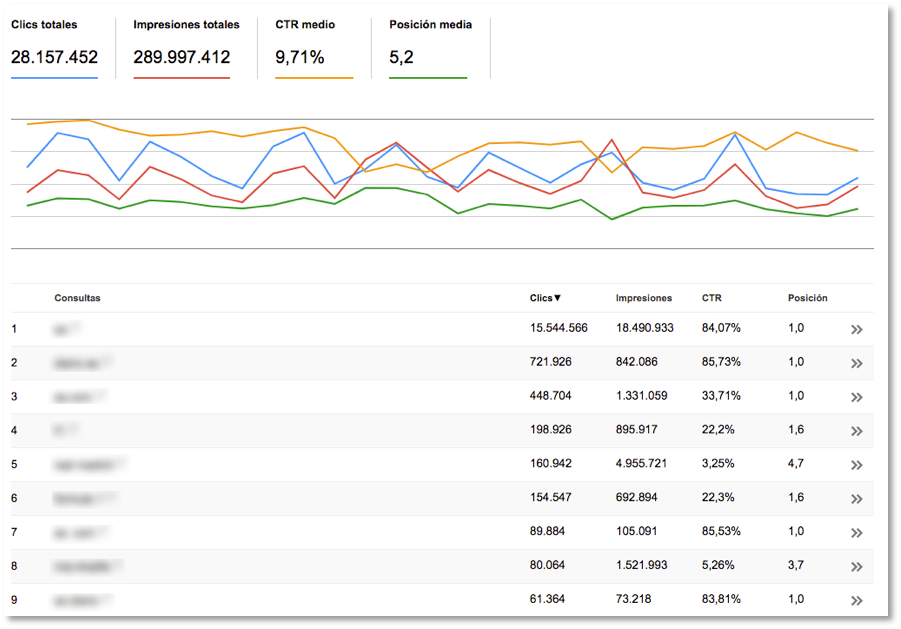
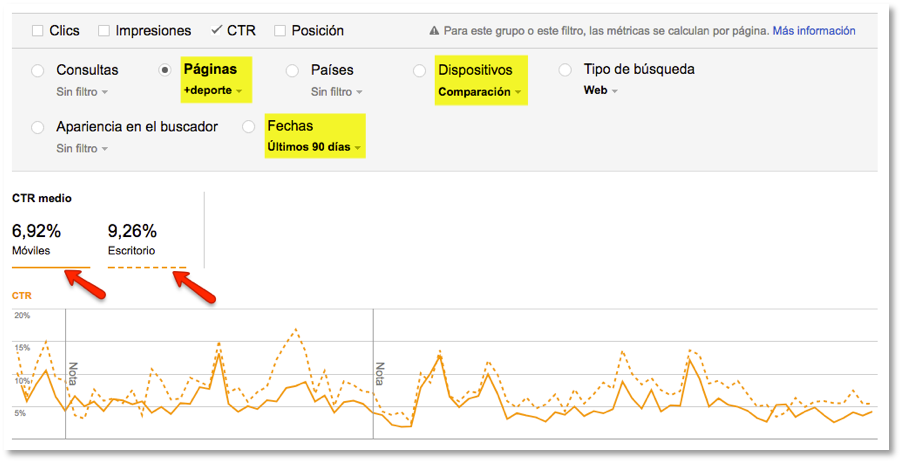
Summary of recommendations
- Conduct keyword research related to the core content you are managing.
- Write quality content, explained in detail and with examples, in which you include the most relevant keywords.
- If the URL is new, incorporate the page’s target keyword in the URL.
- Optimize title and meta description based on the most important terms.
- Apply microformats specific to the file: recipe, event, book, local business, etc.
If the CTR of your website is still low, do not doubt that, by implementing the guidelines offered in this article to enrich your results in the search engine until you reach position 0, you will be able to increase it significantly.
Additional references
- What are Featured Snippets – Rocío Rodríguez.
- Types of Google SERP results in 2020 and how to appear in them – Rocío Rodríguez.
